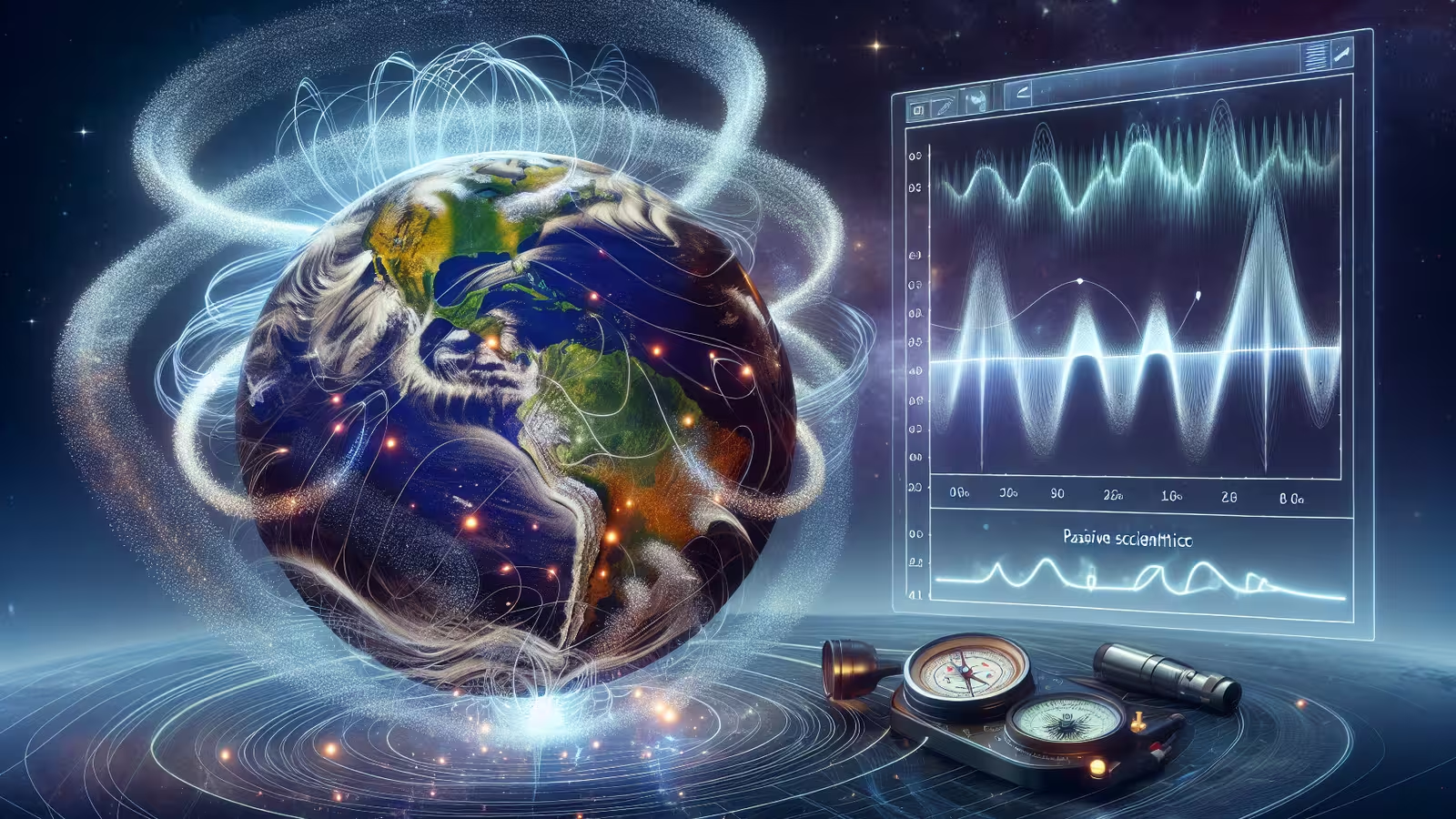5 Minutes
Earth’s Unique Recipe for Life: The Interplay Between the Magnetic Field and Oxygen
Earth’s ability to sustain complex life is the result of a series of extraordinary planetary features, including a rich, oxygen-filled atmosphere and a powerful magnetic field. Both have long been recognized for their individual importance: while oxygen supports nearly all terrestrial life, the magnetic field shields our planet from harmful cosmic and solar radiation. However, a groundbreaking new study, published in Science Advances and conducted by researchers from NASA, the University of Washington, and the University of Leeds, unveils a striking link between these two systems—one that has likely been crucial over our planet’s distant past.
Uncovering Ancient Clues: The 540-Million-Year Data Record
To explore potential connections between Earth’s atmospheric and geophysical history, the international research team analyzed geological evidence spanning back to the Cambrian Period, more than 540 million years ago. By examining the abundance of charcoal in sediment layers—remnants of ancient wildfires—they found an indirect proxy for atmospheric oxygen levels, since more intense and persistent wildfires indicate higher oxygen concentrations. In tandem, they studied magnetic minerals formed during ancient volcanic eruptions. These crystals, stable over immense timescales, effectively serve as a “geological compass,” preserving the direction and strength of Earth’s magnetic field at the moment they formed.
When researchers plotted atmospheric oxygen and magnetic field intensity over time, a remarkable trend emerged: both features showed a consistent, almost parallel increase over hundreds of millions of years, punctuated by a notable surge in activity between 330 and 220 million years ago. This period coincides with the formation of the supercontinent Pangea, though the causal relationship remains unresolved.
The Puzzle of Planetary Feedback: How Are Oxygen and Magnetism Linked?
The scientific team’s analysis revealed that the rise and surge of Earth’s magnetic field and oxygenation are not isolated events, but instead appear to be synchronously regulated. As the authors described, “Both exhibit strong linearly increasing trends, coupled with a large surge in magnitude between 330 and 220 million years ago. Our findings suggest unexpected strong connections between the geophysical processes in Earth’s deep interior, the surface redox budget, and biogeochemical cycling.”
Precisely how these two systems interact remains under investigation, but researchers are considering several possible scenarios:
Magnetic Field as a Shield for Life
A prominent hypothesis is that the magnetic field plays a protective role, preserving Earth’s atmosphere and shielding oxygen-generating organisms from the Sun’s constant barrage of solar wind and radiation. This is supported by the fate of Mars, which, despite occupying the Sun’s habitable zone, lost its atmosphere after its magnetic field dissipated billions of years ago.
Oxygen and Plate Tectonics Influencing the Core
Alternatively, the team speculates that geochemical processes tied to plate tectonics and oxygen cycling might influence conditions within Earth’s outer core—the layer responsible for producing the magnetic field via the geodynamo effect. Plate tectonics constantly renew the planet’s surface and may help funnel oxygen and other chemical species toward the core, affecting its dynamics.
The Possibility of a Third, Unknown Factor
Importantly, researchers have not ruled out the possibility that a yet-unknown mechanism could govern both atmospheric oxygenation and magnetic field strength, hinting at a more complex planetary system than previously understood.
Expert Insights: Probing the Planet’s Deep History
These discoveries highlight the intricate web of feedbacks that governs planetary habitability. “One single mind cannot comprehend the whole system of the Earth,” said NASA’s Dr. Ravi Kopparapu, co-author of the study, in an interview with Live Science. “We’re like kids playing with Legos, with each of us having a separate Lego piece. We’re trying to fit all of it together and see what's the big picture.”
Although the data covers a staggering 540 million years—almost twelve percent of Earth’s entire 4.5-billion-year history—the patterns observed may still be coincidental or linked to cycles more ancient than those detected so far. However, the strong correlation provides a tantalizing clue to how finely balanced, and perhaps rare, Earth’s systems are.
The Broader Context: Earth as a Model for Exoplanet Habitability
Understanding interactions between a planet’s magnetic field and atmosphere has far-reaching consequences for identifying habitable worlds beyond our own solar system. Both features are considered crucial for maintaining water, shielding against radiation, and supporting complex life. As scientists search for life on exoplanets, these new findings offer tools and priorities for future space missions and planetary studies.
Conclusion
This research offers compelling evidence that Earth’s robust magnetic field and its oxygen-rich atmosphere may be more deeply interlinked than previously recognized. While the precise mechanisms at play are still being unraveled, these findings amplify our appreciation of the delicate and dynamic system that makes Earth a uniquely habitable world. By delving into our planet’s geological past, scientists not only illuminate mysteries of Earth’s own evolution but also advance the search for life elsewhere in the cosmos. The ongoing effort to piece together this grand planetary puzzle underscores just how remarkable—and perhaps fragile—our home planet is.
Source: popularmechanics



Comments